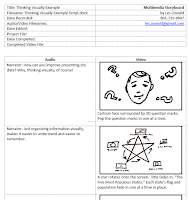Monday, May 29, 2017
Tuesday, May 23, 2017
Not the Camera - the Eye
I walked into Mr. Pankratz’ class without the required 35mm film camera. I had a Kodak 120 roll film box camera. I thought I’d be laughed right out of the room. Mr. Pankratz looked at my gear and he ran down the plusses and minuses of my choice. A plus: the film size is much bigger, so I’d be able to blow up images easier in the darkroom. A minus: the enlarger we’d use had glass holders. We’d need super attention to cleanliness to keep dust spots off the negatives. Another plus: since the roll film was advanced manually, I could play with special effects in ways that my fellow students couldn’t. Also a minus: since the roll film was advanced manually, I had to remember to advance it myself when I was ready to take the next photo. If I didn’t, I’d get unintended double exposures. And then the topper: “It’s not the camera that makes the photographer. It’s the eye.” In my whole career as a small team videography/photography outfit, I’ve remembered that. I’ve been able to upgrade and downgrade my gear over and over. But it’s my eye, not my gear, that dictates my shots.
Last week I took several classes in CreativeLive’s Photoshop Week series. Of course the cool course for gadget-heads was Create Stunning Drone Images with Adobe® Creative Cloud® with Colin Smith. And the first part of the presentation was exactly what you’d be looking for, features and specs on different drone models. The second part though, focused on using drones as a camera platform that you can place anywhere. One thing that Colin said was, “Don’t shoot everything from 400 feet up just because you can. Some subjects don’t look good from 400 feet up!” He emphasized that we’re still photographers. We’re looking for “that image.”
“You know that moment in a sunrise when the horizon splits as the sun rises above it? Terrestrial-based photographers have that moment just once. I get it ten times!” He talked about framing and composition and using drones as a photo tool. That’s when he really got my attention. Yes, drones are techno-cool. But more importantly, they’re a tool that helps photographers achieve their vision. Check out photoshopcafe.com for more tutorials and news from Colin Smith.
So get the cool gear, but train your eye.
Tuesday, May 16, 2017
It MUST Be Tuesday
Wednesday, May 10, 2017
Thinking Visually
 I use a template to write multimedia scripts. It divides the visual and audio sections into separate columns. I noticed that many writers start on the narration portion, and then go back and add the descriptions of the visual side. Since I think visually, I usually start with what I want the audience to see, and then fill in what what needs to be said about each visual. In a “Show and Tell” video they start with the “Tell.” I like to start with the “Show.” Also, I insist that each visual be an instructional hook to hang a concept on. Each graphic has to communicate something.
I use a template to write multimedia scripts. It divides the visual and audio sections into separate columns. I noticed that many writers start on the narration portion, and then go back and add the descriptions of the visual side. Since I think visually, I usually start with what I want the audience to see, and then fill in what what needs to be said about each visual. In a “Show and Tell” video they start with the “Tell.” I like to start with the “Show.” Also, I insist that each visual be an instructional hook to hang a concept on. Each graphic has to communicate something.When it’s time to present textual information, a lot of presenters get stuck in a rut. They can’t get
past list making. By thinking visually, you can help the audience remember the concepts and avoid “death by bullet point.” For example, if you’re presenting five related concepts, you can place the concept names around a five-pointed star. That’s far more memorable than a list of bullet points. One step further, find a visual way of representing each of the concepts, and place icons around the star.
You've got nine items? Try organizing them in a tic-tac-toe grid. You'll help your audience visually organize the content to make it easier to remember.
Writers are proud of their way with words. Thinking visually, they can magnify that talent.
Saturday, May 6, 2017
Tip and Quote (or... Tipping Quote)
Subscribe to:
Comments (Atom)









